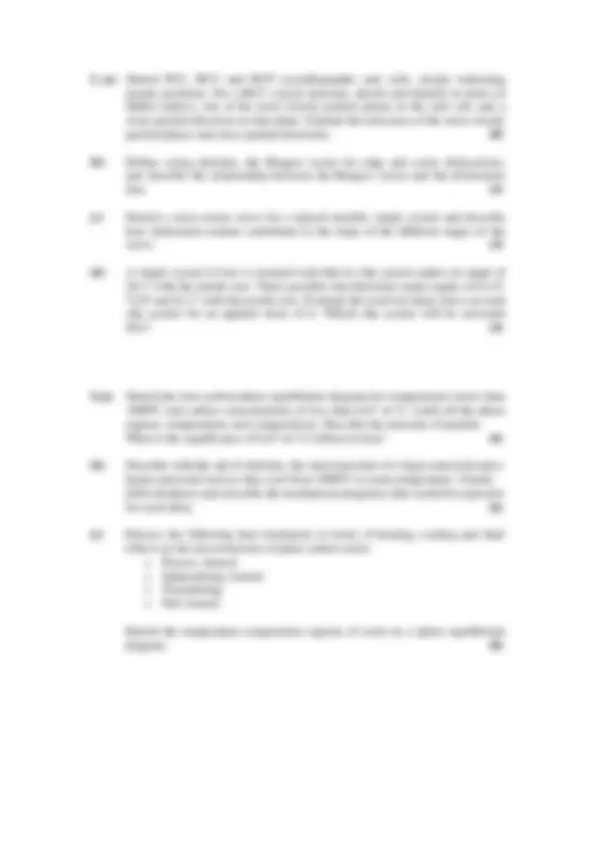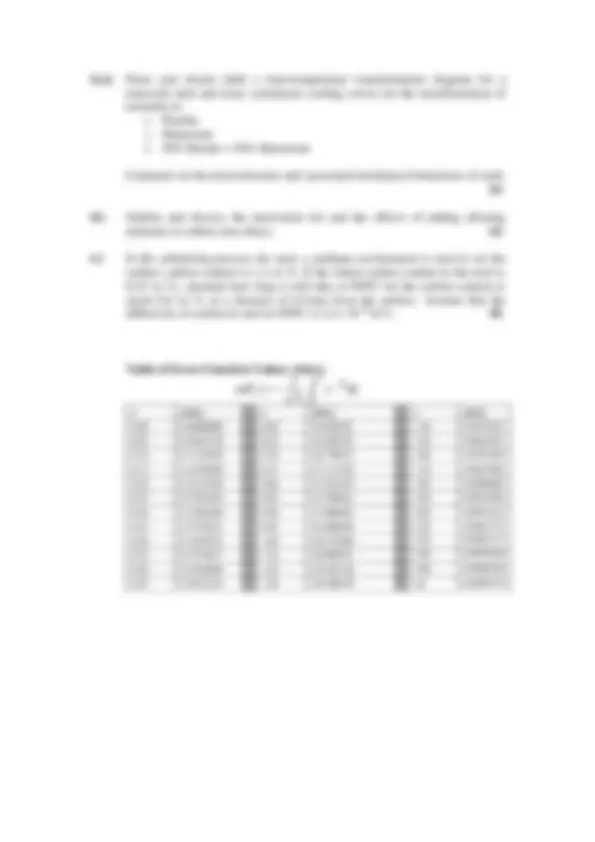




Study with the several resources on Docsity

Earn points by helping other students or get them with a premium plan


Prepare for your exams
Study with the several resources on Docsity

Earn points to download
Earn points by helping other students or get them with a premium plan
Community
Ask the community for help and clear up your study doubts
Discover the best universities in your country according to Docsity users
Free resources
Download our free guides on studying techniques, anxiety management strategies, and thesis advice from Docsity tutors
Information about the spring examinations for the 3rd year modules in mechanical and biomedical engineering. It includes exam codes, module codes, paper details, instructions, requirements, and material properties for metallic alloys. Students are required to answer questions related to engineering stress-strain curves, crystallographic unit cells, burgers vectors, stress-strain curves for single crystals, and phase equilibrium diagrams.
Typology: Exams
1 / 4

This page cannot be seen from the preview
Don't miss anything!



Exam Code(s) 3 BM, 3 BG Exam(s) 3 rd^ Mechanical Engineering 3 rd Biomedical Engineering Module Code(s) (^) ME Module(s) Metals and Metal Processing Paper No. 1 Repeat Paper No External Examiner(s) Prof. Noel O’Dowd Internal Examiner(s) Prof. Sean Leen Dr. Mark Bruzzi Instructions: Answer 3 questions
No. of Pages 4 including cover sheet Department(s) Mechanical & Biomedical Engineering Course Co-ordinator(s) Dr. Mark Bruzzi Requirements: Graph Paper Yes
1.(a) Table 1 gives the material properties of four metallic alloys. Using graph paper, sketch the engineering tensile stress-strain curves for each alloy. Clearly indicate how you used the data provided to construct the curves and label for one of the materials all the main features including: (i) Elastic and plastic regions (ii) Proof Stress (iii) Ductility (iv) Unloading curve and residual plasticity after a loading strain of 5% ( 8 ) Material Young’s Modulus (GPa) Yield Strength (MPa) Tensile Strength (MPa) Strain at Max. Stress % Fracture Strain Poisson’s Ratio 2024 Aluminium 70 345 485 0.13 18 0. Ti-6Al-4V 105 830 900 0.1 14 0. 304 Stainless Steel 205 515 860 0.085 10 0. Table 1: Tensile Mechanical Properties (b) A 10cm long, 10mm diameter cylindrical specimen of the 304 stainless steel, for which the stress-strain properties are given in Table 1, is pulled in tension with a force of 10kN. Compute the elongation and reduction in diameter of the specimen at its maximum load. ( 6 ) (c) If the specimen under consideration in part (b) is subjected to a torque, T, of 100 Nm, calculate the resulting angular deformation, , using: l
J r
where l is the length of the bar, G is the shear modulus of the material and J is the polar moment of inertia given in terms of the radius of the bar r. (6)
4 .(a) Draw and clearly label a time-temperature transformation diagram for a eutectoid steel and draw continuous cooling curves for the transformation of austenite to: o Pearlite o Martensite o 50% Bainite + 50% Martensite Comment on the microstructure and associated mechanical behaviour of each. (6) (b) Outline and discuss the motivation for and the effects of adding alloying elements to carbon-iron alloys. (6) (c) In the carburising process for steel, a methane environment is used to set the surface carbon content to 1.2 wt %. If the initial carbon content in the steel is 0.25 wt %, calculate how long it will take at 950ºC for the carbon content to reach 0.8 wt % at a distance of 0.5mm from the surface. Assume that the diffusivity of carbon in steel at 950ºC is 1.6 x 10-^11 m^2 /s. (8) Table of Error Function Values where: x erf(x) x erf(x) x erf(x) 0.00 0.0000000 0.60 0.6038561 1.40 0.